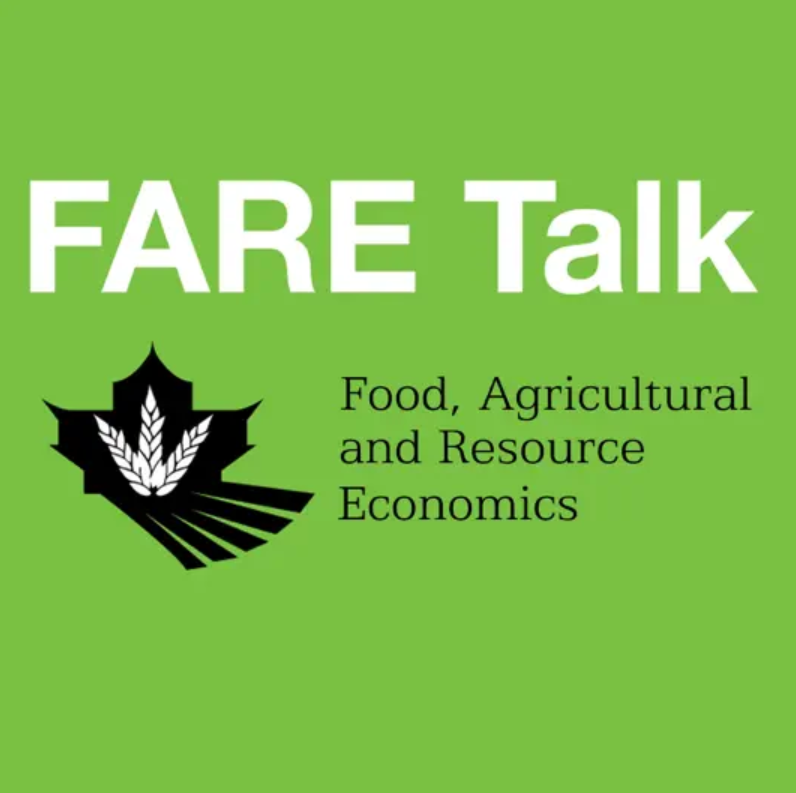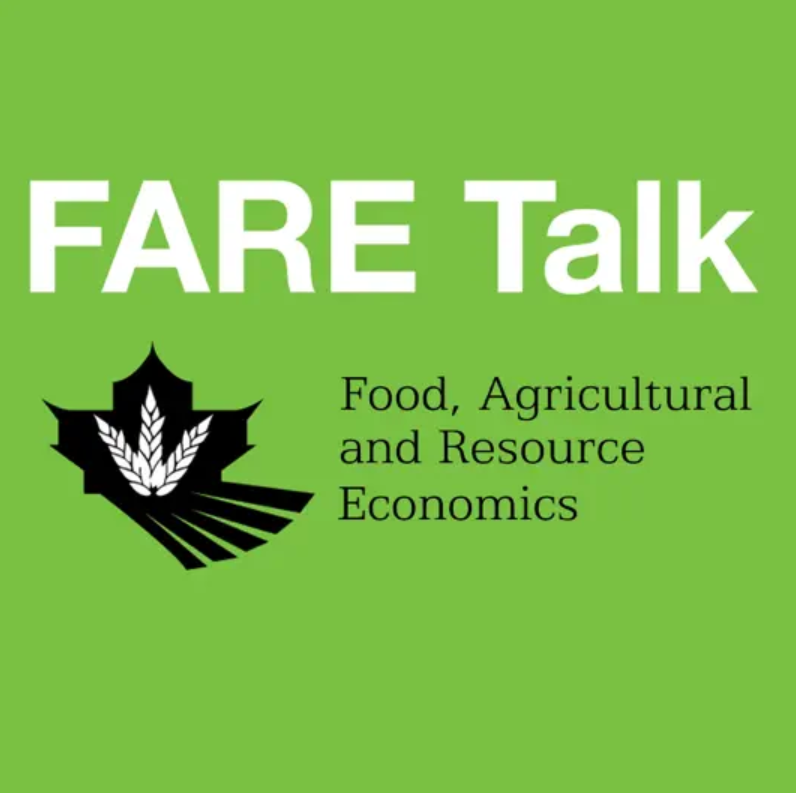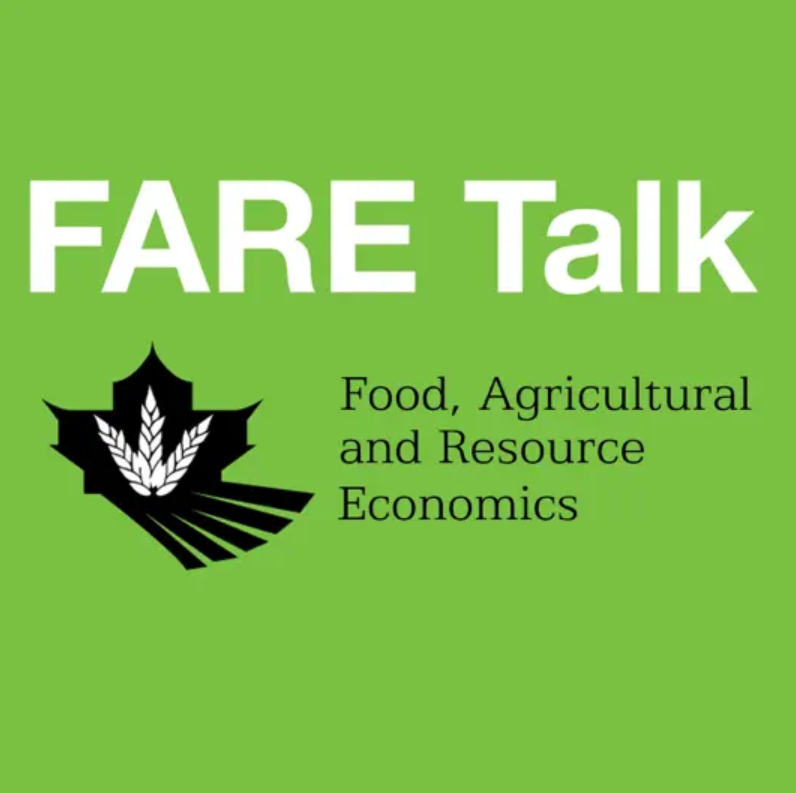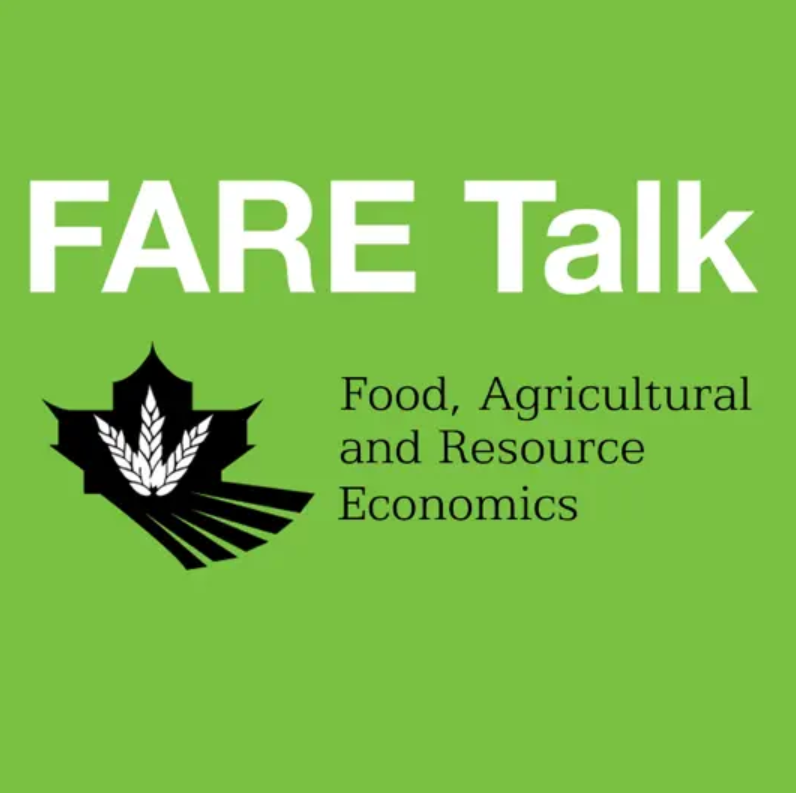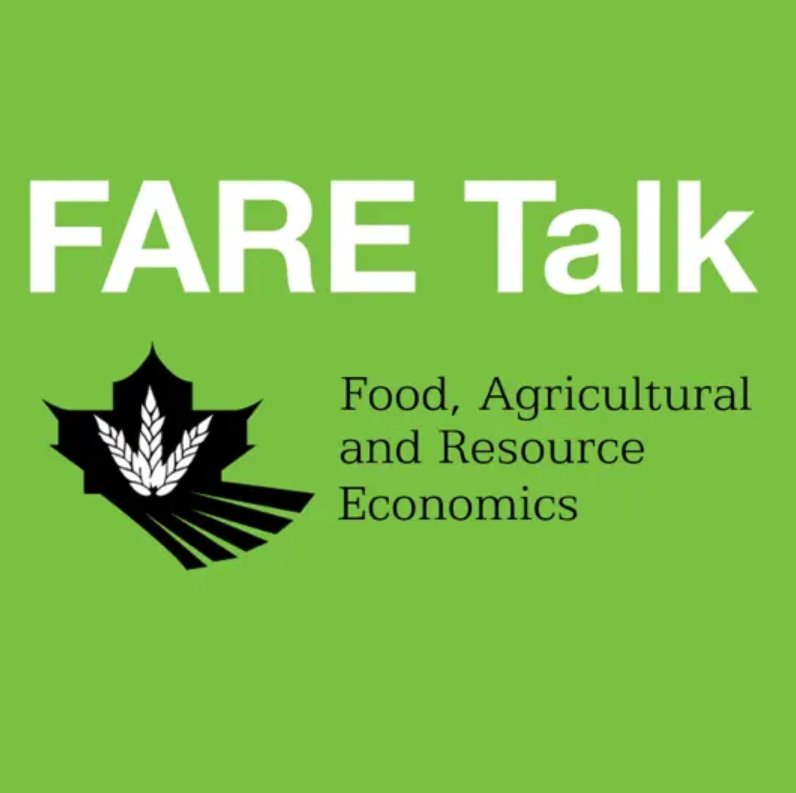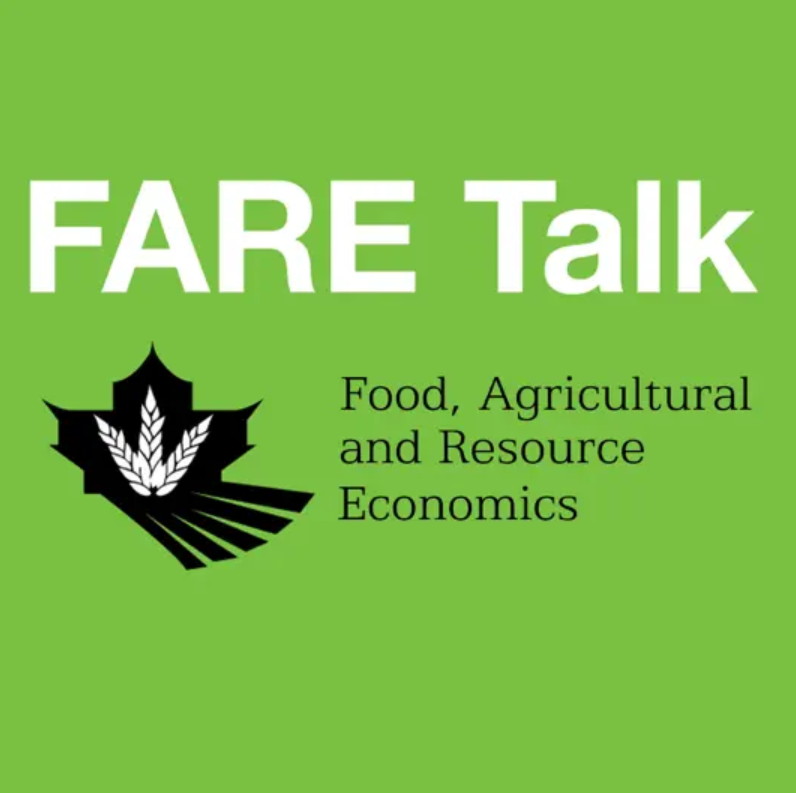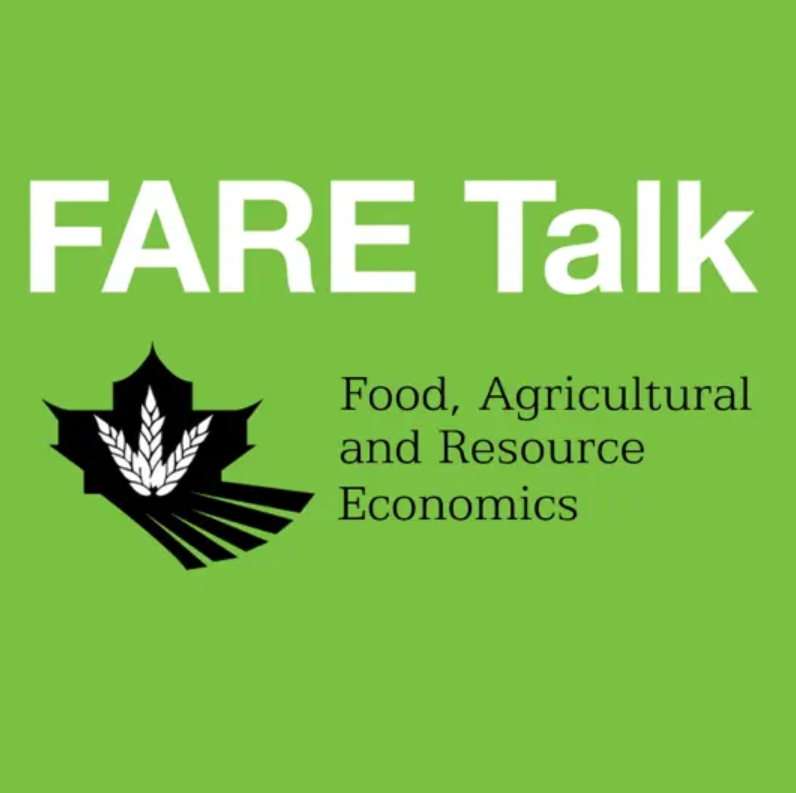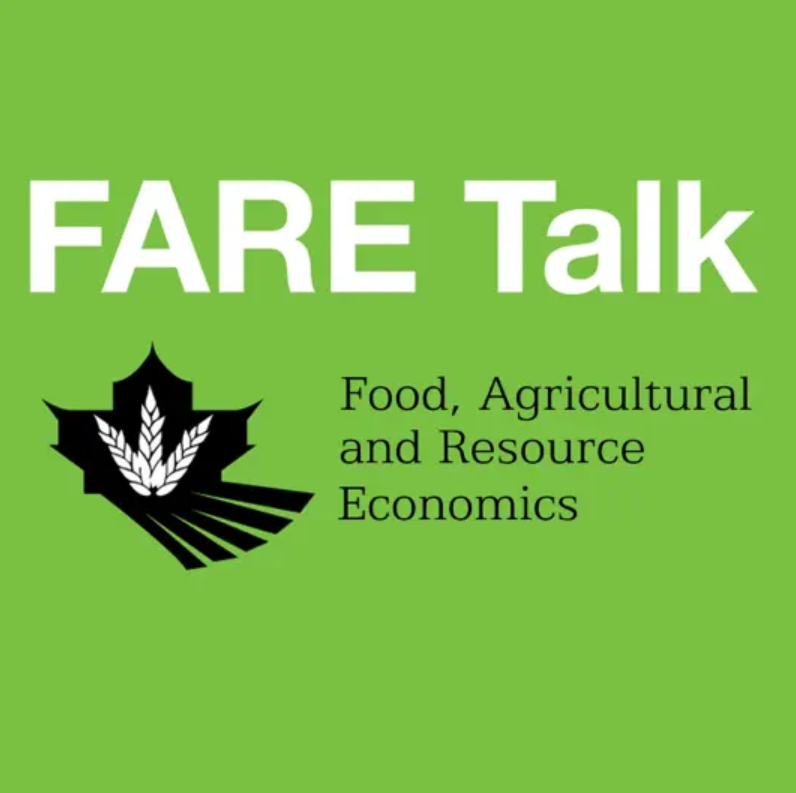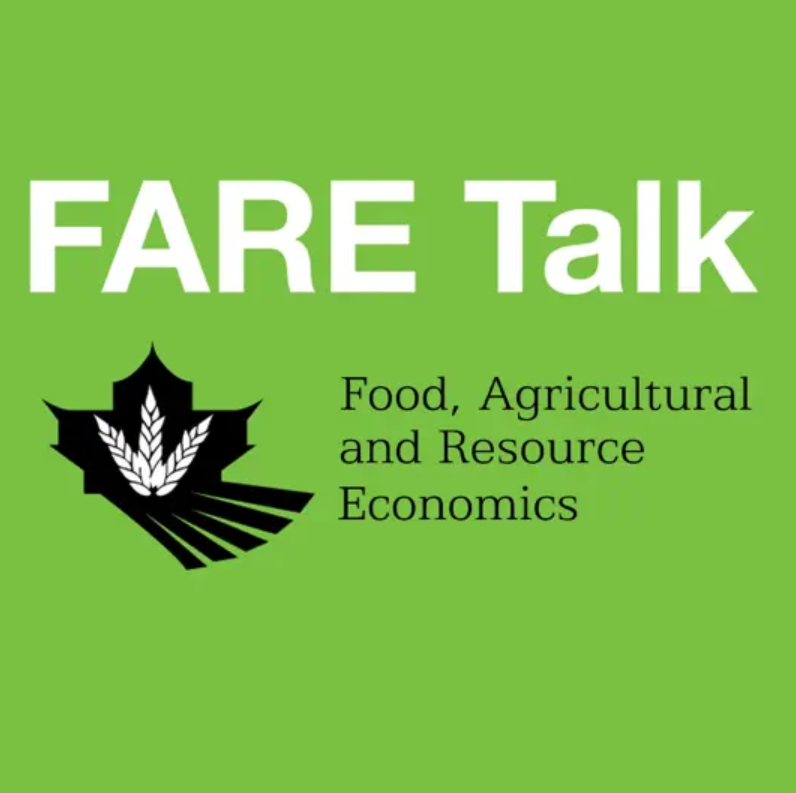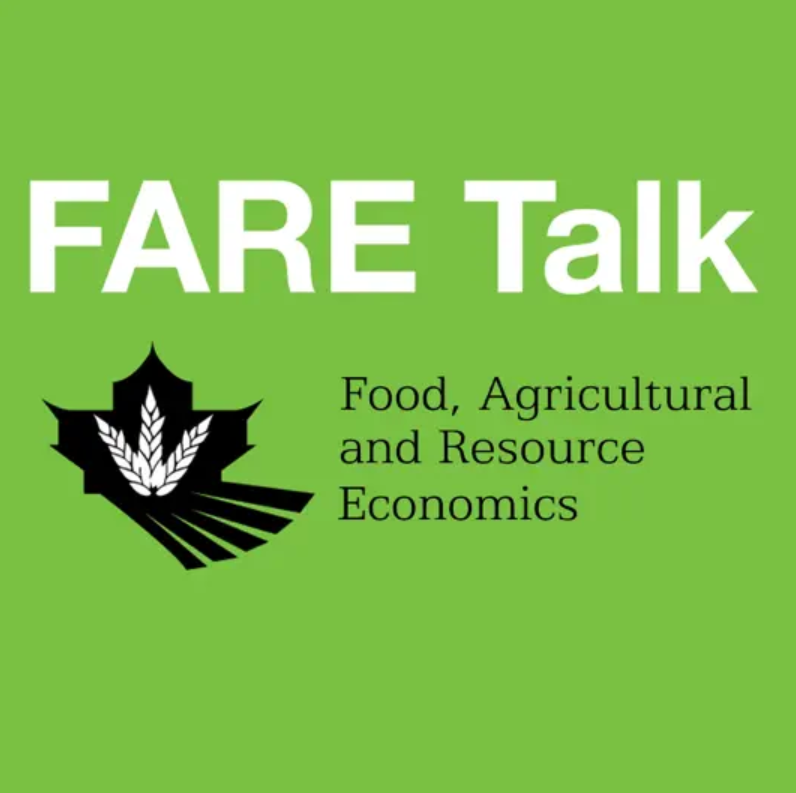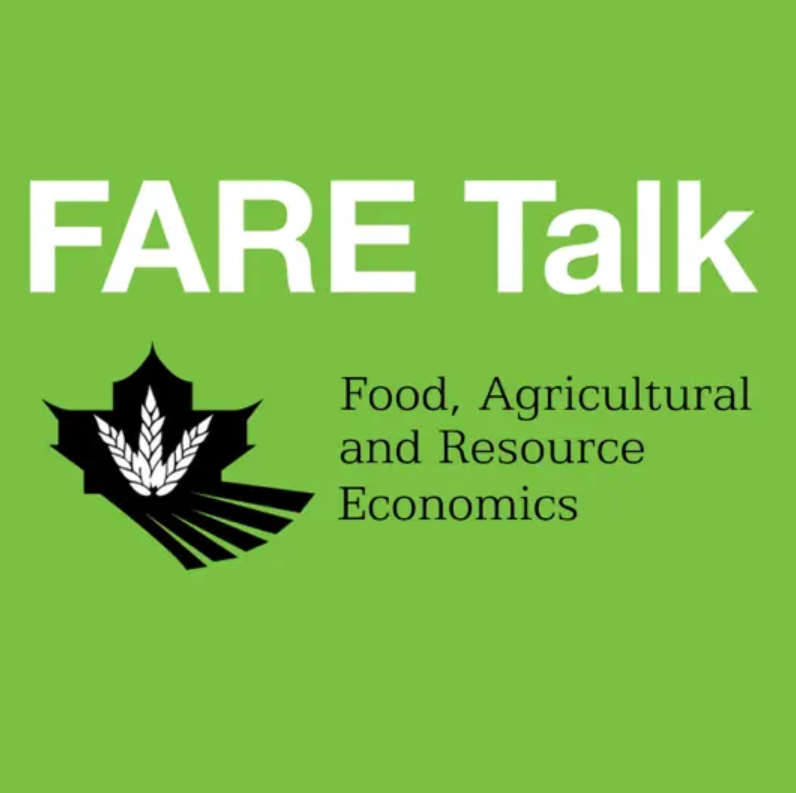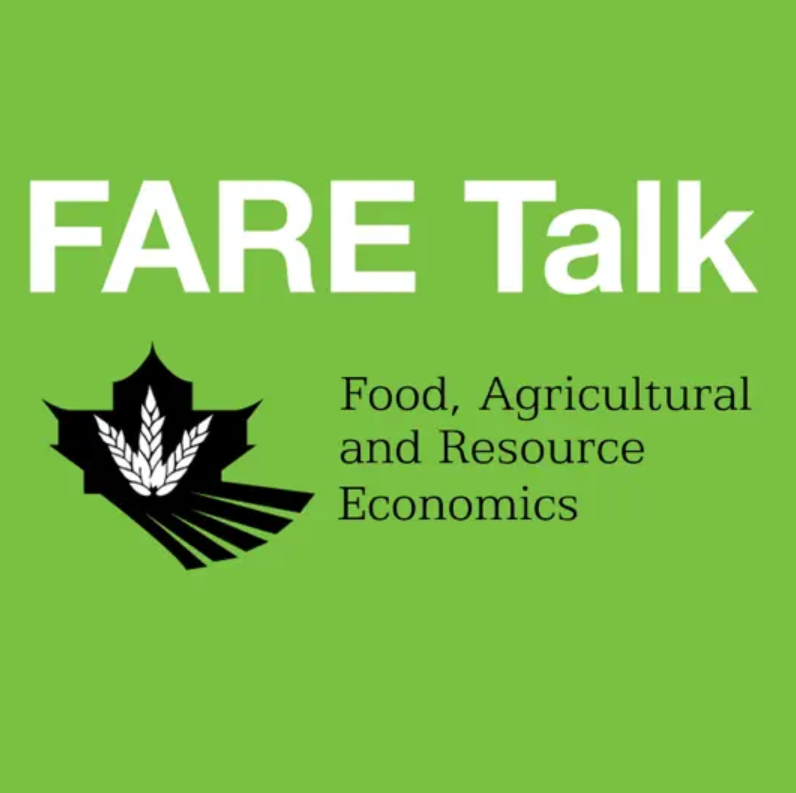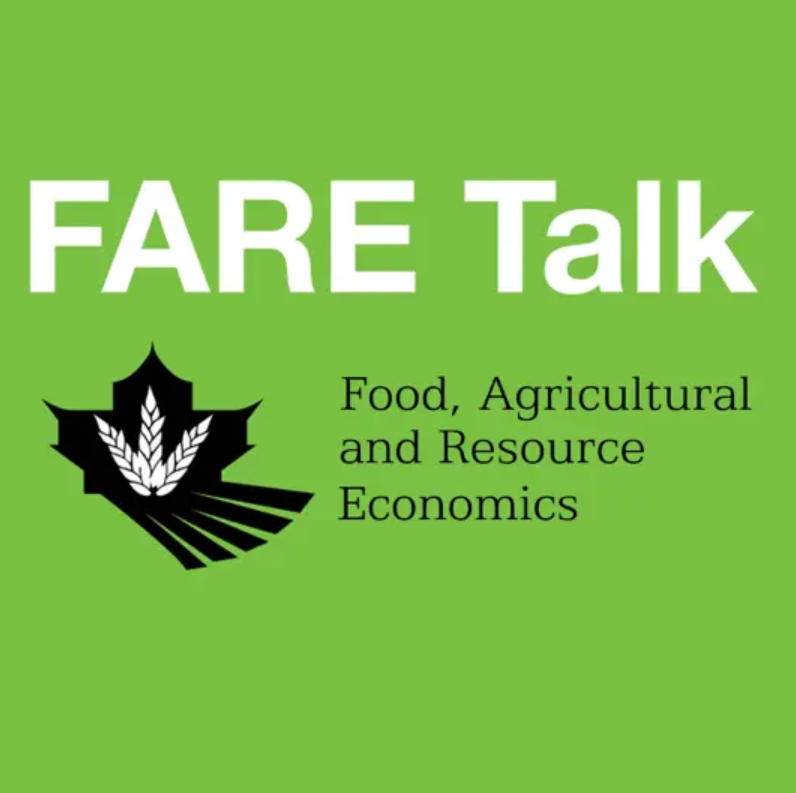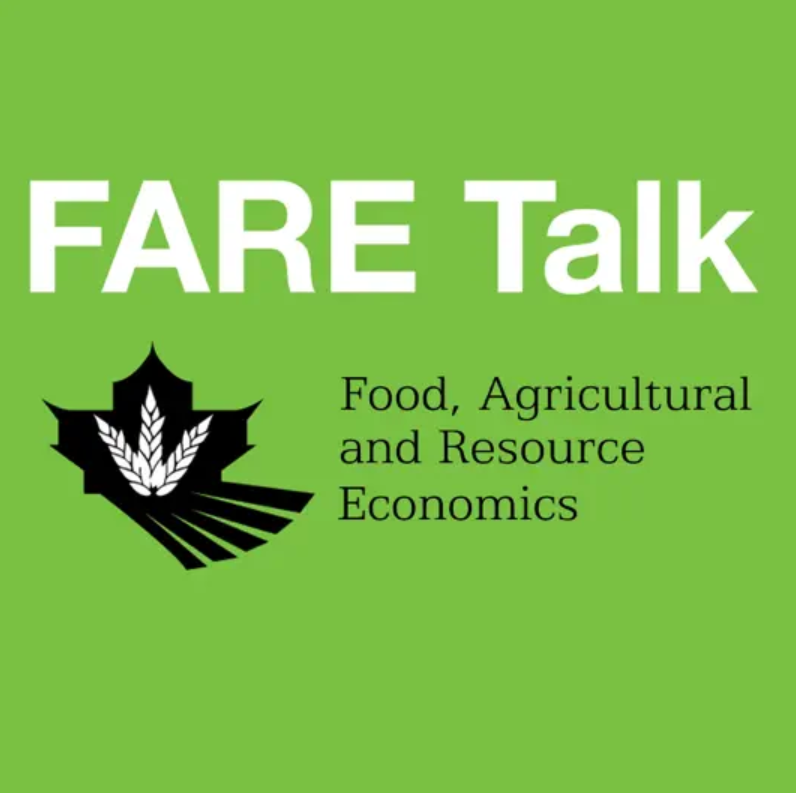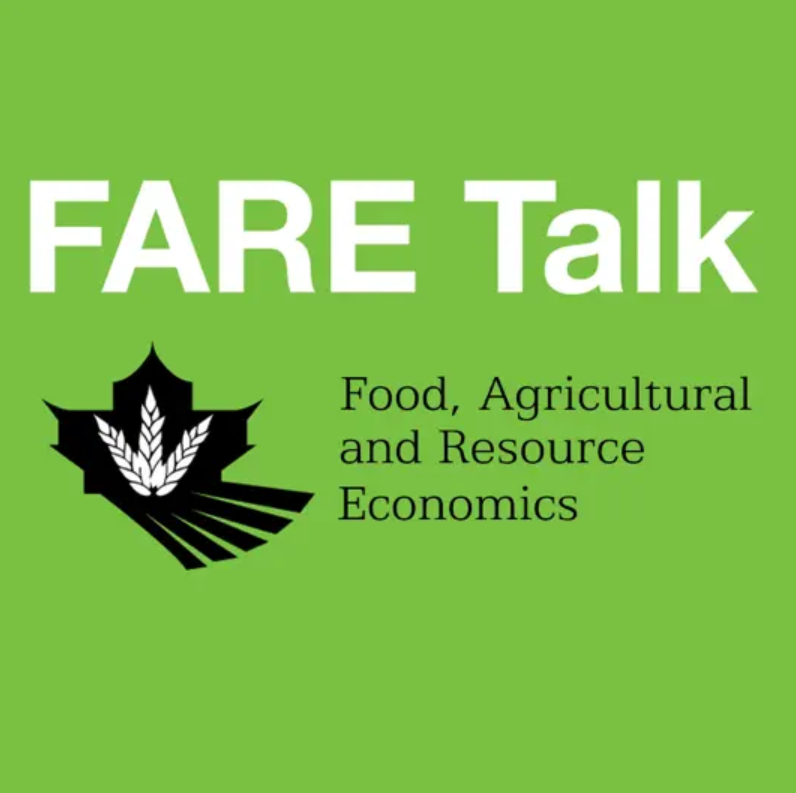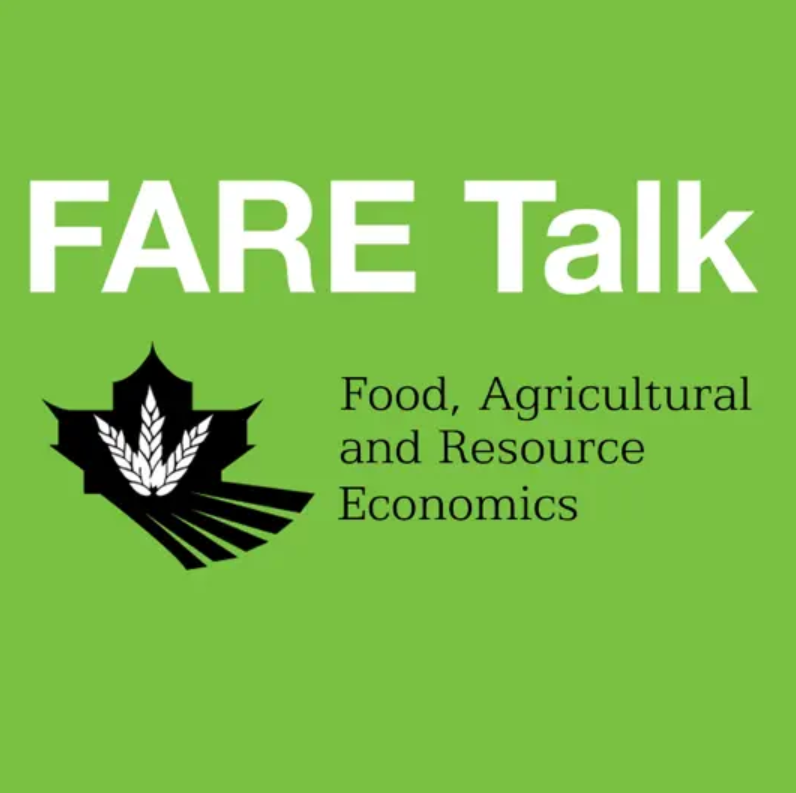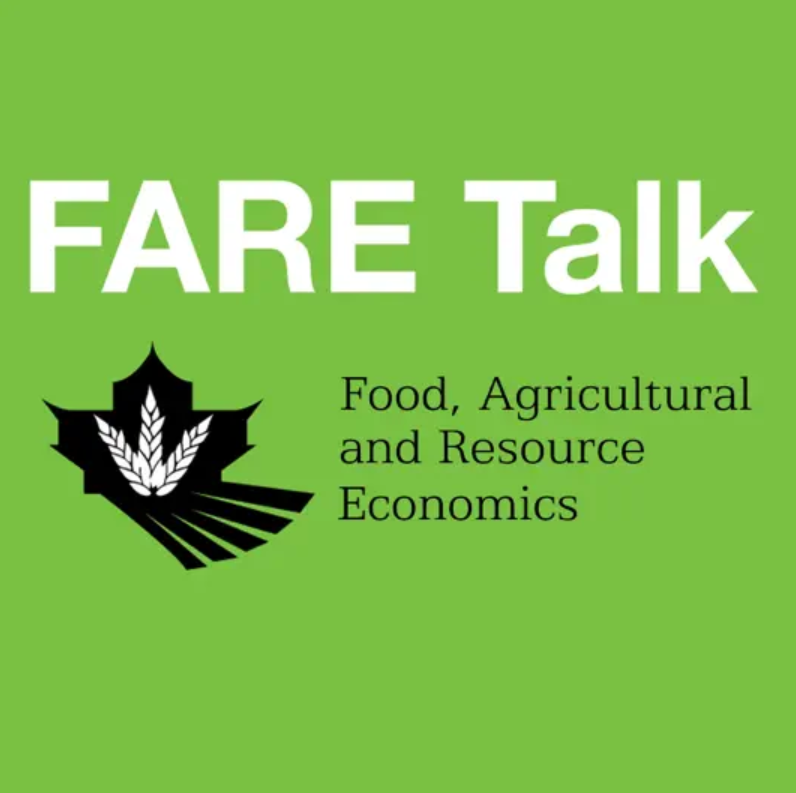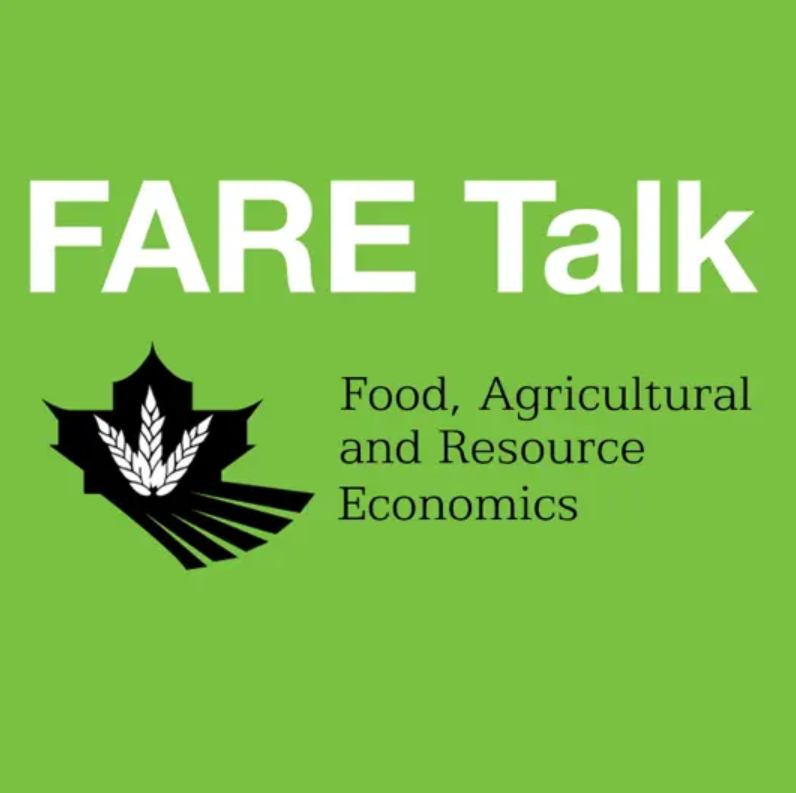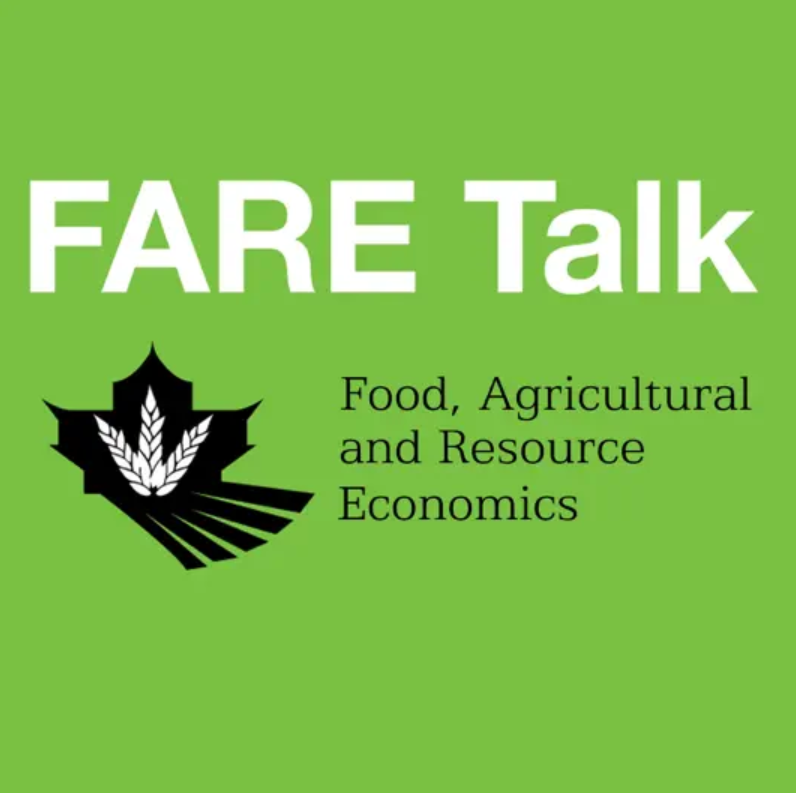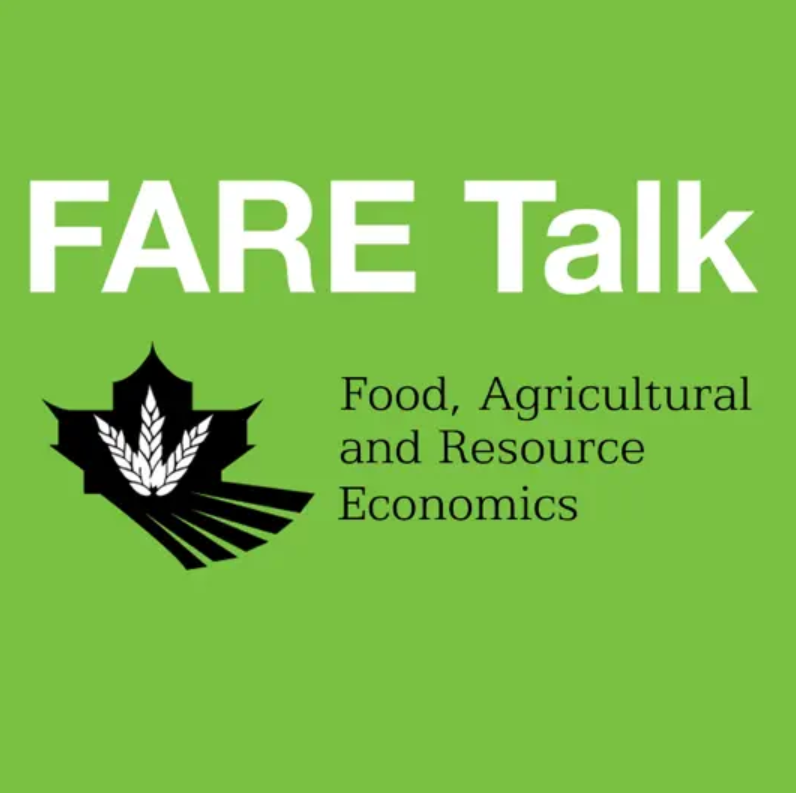What's The Buzz? A Discussion of Bees and Neonics - June 27th, 2016
Description
Dr. Cynthia Scott-Dupree and Dr. Brady Deaton discuss the science that informs understanding of the relationship between bees and neonics - a pesticide that has recently been made subject to new restrictive regulations in Ontario, Canada and elsewhere.
Transcript
Brady Deaton: [0:04 ] Welcome to FARE Talk where we set out to provide enduring discussions on contemporary topics relevant to our economy with particular emphasis on food, agriculture and the environment. My name is Brady Deaton Junior of the Department of Food, Agriculture and Resource Economics at the University of Guelph. I'll be your host. [music ends] Today I'll be talking to Dr. Cynthia Scott-Dupree and we'll be discussing the science that informs our understanding of the relationship between bees and neonics, a pesticide that the Government of Ontario has recently made subject to new restrictive regulations. Cynthia is the Bayer CropScience Chair in Sustainable Pest Management in the School of Environmental Sciences at the University of Guelph. For the sake of full disclosure I note that Bayer produces neonics, I also note that Cynthia is a well-published researcher in the broad area of pest management and in the specific area that we are going to discuss today. Cynthia, thanks for coming and joining me at FARE Talk.
Cynthia Scott-Dupree: Thanks so much for inviting me.
Brady: [01:02 ] You're welcome. Alright so let's see if we can just kind of delve in and I'm not sure the best place to start but maybe we'll just talk about neonics and try to break that down and then we'll talk about bees and then let's try to talk about the science, so we'll have some of our terms. So, neonicotinoids and neonics, can we use those interchangeably?
Cynthia: Ah yes, neonics is much easier to say than neonicotinoids or neonicotinoids or whatever you want to say, so let's just call them neonics.
Brady: Alright then even within neonics there's three of them that are typically talked about and they have pretty complicated names too. Is it important that we understand that there's more than one kind of neonic out there?
Cynthia: [01:41 ] There's certainly several different neonics and there's actually different families of neonics and within those families their toxicity to bees can vary a lot, so again just within the neonicotinoid or neonic family it's complicated, but the ones they speak of most are imidacloprid, which has been around the longest and I would dare say that most of the research studies that anyone wants to read on them has been focused on imidacloprid. The second generation or newer neonics that are also seen, talked about in these research and other articles is clothianidin and thiamethoxam. But instead of just talking about those today I think we'll just talk in general about neonics.
Brady: Okay but even in the headlines I probably read I probably could have been referring to a study that was looking at a particular one of [Cynthia: Yeah] those neonics rather than all and that could be important to [Cynthia: Yes] some of those differences.
Cynthia: [02:45 ] It's true they have different toxicities but I think the more important thing here is to understand some of the basic characteristics of neonics and how they are used in an agricultural setting. For example, neonics can be used as a foliar so they can be sprayed on a crop. They can be used in furrow so they can be sprayed in the furrow when the seed is planted. They can be used as drenches, but more commonly they are used as a seed treatment and this is because neonics have a special characteristic. They are a group of systemic insecticides and this means that when they are applied to the plant they move upwards through the plant so they are in all parts of the plant tissue, and in the sense that we are today talking about impacts on bees, what can also happen is that these neonics will then become concentrated in the reproductive parts of flowering plants and that would be in things like the pollen, and certainly also the nectar because that's what bees will forage on. So you'll get residues moving to these sites, and that's the interface where these beneficial insects can be exposed to the toxins.
Brady: Alright, just step back a minute. You know we think about bees providing honey and they also are an important pollinator and that's an important input into agriculture production, but so is pest management, right? [Cynthia: Certainly]. Since the plagues of Moses we know that to have food we have to control pests and so [Cynthia: Absolutely] neonics are an insecticide that do that. What came before? How long have neonics been around? Was there another pesticide that they replaced? Is that important to the story?
Cynthia: [04:36 ] I think agricultural pesticides as we know them today were introduced after the Second World War. A lot of the chemicals we now use in agriculture were developed in terms of chemical warfare, and then afterwards after the Second World War they realized the potential use of them in agricultural applications, and so there’s a whole raft of classes of insecticides specifically or pesticides that have been introduced over the years. We won't get into those, but the more recently introduced group since about the 1990s, early 1990s, would be the neonics, and as I say the characteristic of systemicity or being systemic is quite unique to them. I won't get into a description of the particular characteristics, but the fact that they move through the tissues is valuable. Another form of applying chemicals, pesticides to crops is seed treatments, and I think I should spend a bit of the time talking about seed treatments I don't think a lot of people will understand this.
Brady: Yeah let's do let's talk about the seed treatment, because that adds the value right, to...
Cynthia: [06:04 ] Yeah. Well, seed treatments I've been a proponent of seed treatments for a long, long time because what you do with the seed treatment situation is you take a tiny little seed and you actually apply the treatment on the coating of the seed, and as the seed grows into a plant the insecticide, the neonic, moves through from the coating on the seed into the tissue of the plant, and therefore it's there from the beginning, so if you have insect pests that attack those plants from the time they germinate and they're just tiny little seedlings when they're very, very vulnerable they will be protected, certainly an advantage. The other thing is that when you utilize the seed treatment versus a foliar treatment where you're spraying a lot of product with water all over the crop and everywhere else, a seed treatment uses a tiny, tiny fraction of the amount of active ingredient that would be the toxin. And so it's advantageous in that way because the environmental impact is much reduced and certainly the people applying these treatments are much safer with a seed treatment than a foliar application.
Brady: Okay so I want to hit that back again make sure I understand it. So prior to this ability to treat the seed I guess if I all of a sudden saw a pest that was threatening my crop then I would have to go out and spray a foliage application and that had a different set of environmental implications. This way pre-emergent I can coat it and [Cynthia: It's protected] deal with the pest ahead of time, so it's almost an insurance policy.
Cynthia: [07:50 ] It is an insurance policy that in itself makes it a difficult situation because the whole entire seed treatment industry is a complicated one. A grower needs to buy treated seed in the year prior to planting, so by October of this year for example, growers would be buying treated seed to plant in the spring of 2017. So it's really difficult to predict what kind of pest you're going to have in 2017, we don't have this kind of crystal ball, although a lot of growers and pest management people wish they did, so it is an insurance policy [Brady: I see] because you do have to buy it well in advance and the cost of buying them is quite small in terms of the total amount it will cost to put a plant in per hectare. So it's insurance and it's difficult to understand how that fits within a pest management concept, but it's an important application technique in terms of seed treatments and we really need to figure out how to manage it better than we do because it's too valuable to lose.
Brady: Alright well before you go we'll talk about the science behind all of this but now let's turn and talk about bees a little bit. Bees, what I am talking about honeybees typically in these studies but it looks like wild bees come into this discussion, bumblebees. How should I think about bees in this discussion?
Cynthia: [09:32 ] Well I would say that a lot of the information people hear about is focused on honeybees because they are our domesticated honeybee the beekeepers have kept for thousands of years, and they are often associated with the pollination of cultivated crops, vegetable crops, fruit crops, any kind of crop that flowers bees will be attracted to and are likely beneficial to that plant in some way shape or form, so the bulk of our information is focused on honeybees but that's not to say that there aren't a lot of other bees out there that are really critically important to agriculture and lots of other ecosystems, not just agriculture, but natural ecosystems. When you go to Algonquin Park or some park and you look at the flowers blooming you will find bumblebees and other bees, bees other

